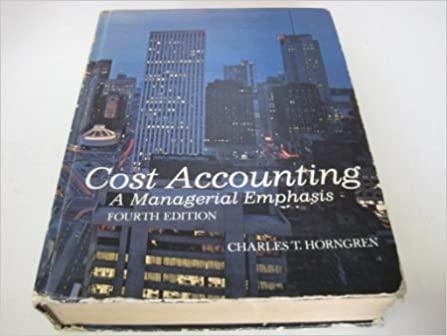Evaluation of Control System Laser Products Inc. is a manufacturer of lasers, laser systems, and related optical
Question:
Evaluation of Control System Laser Products Inc. is a manufacturer of lasers, laser systems, and related optical products. While its annual sales of $10 mil- lion and its 300 employees classify it as a small business, it is a major factor in the industry. The company has an international reputation for being both a leader in technology and a dependable quality producer. After several years of existence, the last two producing slight losses and a severe drop in stock price, the company president stated survival as the pri- mary corporate objective for the next fiscal year. Survival meant showing a profit of $600,000 in order to make peace with the investment community. Additionally, he wanted to concentrate on finding new commercial applica- tions for existing technology: this strategy, as opposed to developing new technology, had been adopted as the best means by which to initiate and sustain growth in sales and profit.
To achieve these goals, a reorganization was undertaken. The organization chart was redrawn from a functional to a marketing orientation, with 90 per- cent of research and development (R&D) now tied directly to the marketing divisions. Six divisions reported directly to the president: Manufacturing, Administration, Advanced Product Development, and the three marketing divisions, Optical Products, Laser Products, and Engineered Laser Systems. Concurrently, a budgeting process for internal use was adopted. Each of the marketing divisions submitted a sales forecast and then, in discussions with the president, settled on a sales figure (item | of the budget below), mar- keting costs (item 3), product R&D costs (item 4), and division overhead expenses (item 5). From the sales figure the manufacturing manager prepared budgets using standard costs, and the resulting manufacturing costs were incorporated in the marketing divisions’ budgets (item 2). The corporate allocations (items 6 and 7) were determined by multiplying the ratio of the divisions’ forecasted sales dollars to the corporation’s forecasted total sales by the budgeted corporate expense. The marketing divisions then received budgets of the form:
(1) Forecasted Sales Dollars XXX Less:
(2) Manufacturing Costs at standard XXX
(3) Marketing Costs XXX
(4) Product R&D XXX
(5) Division Overhead XXX
(6) Corporate Allocated R&D XXX
(7) Corporate Allocated G&A XXX XXX Profit Target aa XXX Following this budgeting procedure, the company established a $600,000 corporate profit target.
In addition, it was decided that the three marketing-division managers would be paid a bonus based on their performance relative to the profit target of their division. This bonus would be calculated as follows:
ACTUAL PROFIT BONUS AS A AS A PERCENT PERCENT OF FIXED OF TARGET ANNUAL SALARY 90 0 91 1 92 2 99 9 100 10 101 12 102 14 103 16 109 28 110 30 The manufacturing manager, the president, and the treasurer would be similarly rewarded based on the joint profit target of the three marketing divisions—i.e. the corporate profit target.
During the year the marketing divisions were charged with the actual costs, including actual manufacturing costs. The corporate allocations were made as a fixed percent, based on forecasted sales, times actual corporate R&D and G&A expenses.
Halfway through the year sales were good and it was clear that the profit targets would be met by all three marketing divisions. The four major division managers were questioned about the effect they thought the incentive system had on their performance. One remarked that he was a major stockholder and a one-point rise in the stock. price would exceed any incentive bonus he might receive. Another stated that the budget and incentive program was a nice addition, but he didn’t follow it closely because he knew that if he “did the right things” the bottom line would respond. The third marketing division manager stated that he had successfully tried to meet his target, trading off R&D and marketing expenses, and so on, but as yet had not found the time to look at new market opportunities.
Most concerned about the system was the manufacturing manager. He said things were great for him this year, since his bonus was based on corporate profits and things had picked up. But he was worried that in lean years, when cost control was emphasized, he would not be rewarded, and perhaps more importantly, the marketing-division managers would spend their time worrying about his costs rather than their sales. It was also his belief that the new system caused the marketing managers to focus on this year’s results and to neglect the crucial search for new products and new markets. Lastly, he was concerned that the system might endanger the teamwork and informal structure that had characterized the company and made it a good place to work.
When questioned about the new budgeting and incentive system the president stated that he knew it wasn’t the theoretically pure answer but his concern was to focus everyone on the bottom-line profit so that it didn’t disappear this year. He admitted there might be some problems with it and seemed willing to modify it for the subsequent years.
Write a memo evaluating the system and proposing any modifications you feel deserve serious consideration.
Step by Step Answer:






